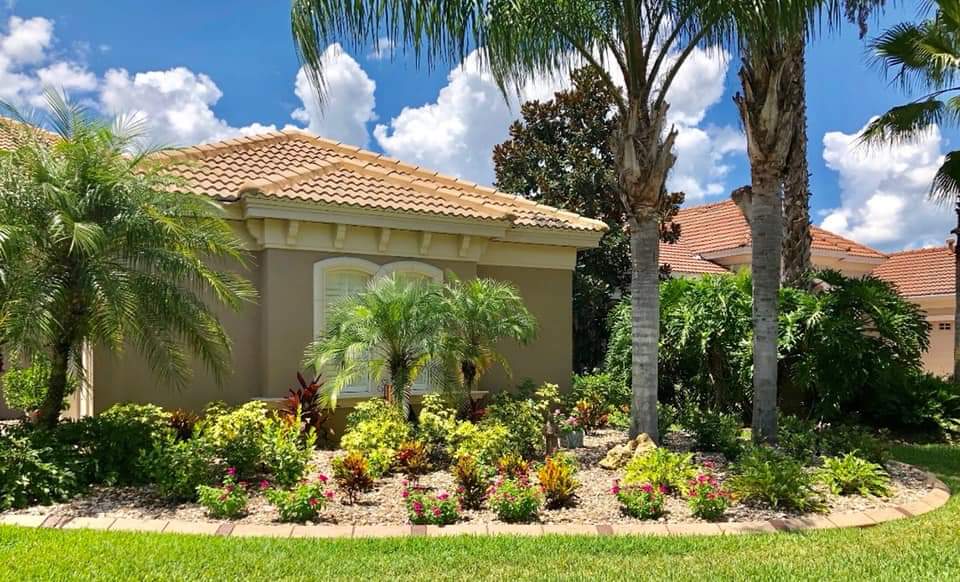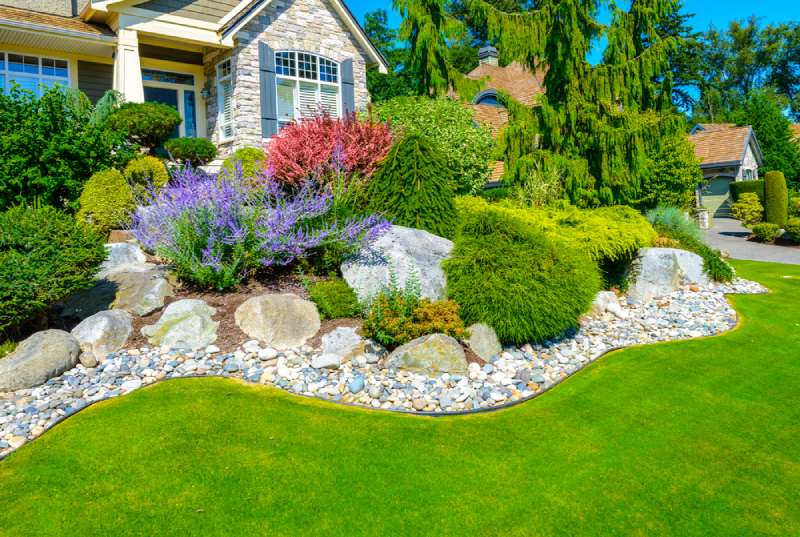Top Tips for Enhancing Your Garden with Palm Desert Landscaping Ideas
Top Tips for Enhancing Your Garden with Palm Desert Landscaping Ideas
Blog Article
A Comprehensive Overview to Creating and Implementing Effective Landscaping Solutions
The art and science of landscaping expand past simple visual appeals; they include a thoughtful integration of layout concepts, environmental stewardship, and practical execution. A thorough guide to effective landscape design solutions starts with a thorough understanding of your outside space, stressing the value of balance, percentage, and unity. As we check out sustainable methods and the selection of ideal plants, the implications for biodiversity and community well-being end up being significantly apparent. What strategies can one utilize to make sure these landscapes not just grow but likewise thrive attuned to their environments?

Understanding Landscape Layout Principles
One may question what fundamental components add to effective landscape layout. At its core, successful landscape layout depends upon a number of crucial principles that guide the setup and selection of aspects within a space. These principles consist of unity, rhythm, equilibrium, and percentage, each offering to produce an unified outside setting.
Unity describes the natural partnership among numerous elements, ensuring that they work with each other visually and functionally. Equilibrium can be achieved with symmetrical or asymmetrical plans, allowing the landscape to feel secure and welcoming. Proportion includes understanding the scale of aspects in regard to each various other and the surrounding atmosphere, advertising visual harmony and comfort.

Assessing Your Outdoor Area
Prior to implementing the principles of landscape style, a detailed assessment of your outside room is vital. This initial examination aids specify the extent of your landscaping project and guarantees that your layout straightens with the special features of your residential property. Begin by assessing the measurements of your space, taking precise measurements to understand the offered area for different aspects such as patios, pathways, and gardens.
Next, observe the existing functions of your landscape, including topography, dirt top quality, and drain patterns. These variables considerably influence plant selection and placement. Furthermore, examine the sunshine exposure across various locations throughout the day, as this will certainly affect the sorts of plants that thrive in your yard.
Take into consideration the microclimates developed by frameworks, trees, and various other challenges, as they can impact temperature and moisture degrees. Finally, make note of any kind of existing plants or hardscape aspects that you wish to eliminate or preserve. This thorough analysis lays the groundwork for a well-informed and reliable landscaping solution, making certain that your style is not only cosmetically pleasing however also useful and sustainable for many years to come.
Sustainable Landscape Design Methods
Including sustainable landscape design methods is essential for developing an environmentally liable outdoor room. These practices not just promote eco-friendly balance yet likewise boost the functional and visual worth of a landscape. One foundational method is the utilization of native plants, which call for less water and maintenance while sustaining local wildlife. Applying efficient irrigation look what i found systems, such as drip watering, minimizes water waste and guarantees that plants obtain adequate wetness.

An additional effective method is the critical placement of hedges and trees to provide natural windbreaks and color, hence decreasing energy costs (Palm Desert Landscaping). Rain gardens can be incorporated into the landscape design to handle stormwater drainage effectively, filtering contaminants before they go into rivers
Picking the Right Plants
Selecting the right plants for your landscape is important to attaining both aesthetic allure and ecological harmony. The process begins with an understanding of your Extra resources regional climate, dirt problems, and the specific microenvironments within your landscape. Evaluating elements such as sunlight exposure, wetness levels, and existing plants will assist you select plants that prosper in your special setup.
Think about incorporating native plants, as they are well-adapted to local problems, call for much less upkeep, and support regional wildlife. Additionally, picking a diverse range of varieties can boost biodiversity while decreasing the risk of disease and bug break outs. It is important to evaluate the growth behaviors, blooming periods, and seasonal shades of possible plants to develop a natural and vibrant landscape.
Additionally, think of the planned use the area; for example, if the area will experience high foot web traffic, select durable ground covers. By thoughtfully choosing plants that align with both your visual goals and environmental demands, you can create a lasting landscape that not only boosts your building however additionally adds favorably to the surrounding ecosystem.

Application and Upkeep Approaches
Once the best plants have been picked for your landscape, the focus shifts to effective application and ongoing maintenance strategies. Successful installation begins with appropriate site prep work, which includes soil testing to determine nutrient degrees and pH, check out here complied with by changing the dirt as needed. Carefully set up plants according to their growth routines and light demands, guaranteeing appropriate spacing to advertise healthy development.
Irrigation is a crucial component of execution. Establish a watering schedule that thinks about the particular demands of each plant types, adjusting for seasonal modifications. Making use of drip irrigation systems can enhance water effectiveness and minimize drainage.
Maintenance approaches must be applied to guarantee the durability and vigor of your landscape. Normal jobs consist of weeding, mulching, and trimming to manage development and protect against illness. Fertilizing ought to be performed based upon soil tests, offering the necessary nutrients without over-fertilizing.
Keeping track of for bugs and diseases is important; early discovery can protect against considerable damages. Lastly, seasonal adjustments to upkeep regimens, such as preparing and winterizing perennials for springtime development, will make sure that your landscape stays visually attractive and healthy year-round.
Conclusion
In conclusion, efficient landscape design solutions call for a thorough understanding of layout concepts, thorough analysis of outside areas, and the application of lasting methods. The option of appropriate plant varieties plays a crucial function in improving aesthetic allure and eco-friendly resilience - Palm Desert Landscaping. Effective application and ongoing maintenance better guarantee the longevity and vigor of landscapes. By integrating these aspects, landscapes can be changed into lovely, practical settings that advertise biodiversity and add positively to community wellness.
One might question what fundamental elements contribute to reliable landscape layout. At its core, effective landscape layout pivots on a number of crucial concepts that direct the plan and option of elements within a space.Selecting the right plants for your landscape is crucial to attaining both aesthetic allure and ecological harmony. It is vital to examine the growth routines, growing durations, and seasonal colors of potential plants to develop a vibrant and natural landscape.
When the appropriate plants have actually been chosen for your landscape, the emphasis changes to effective execution and recurring upkeep strategies.
Report this page